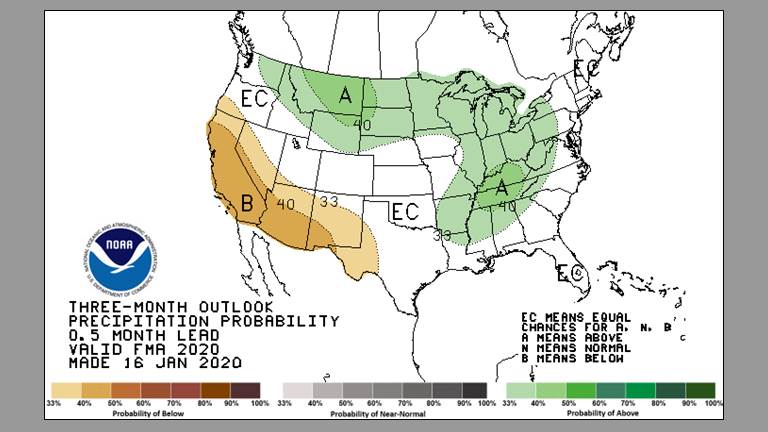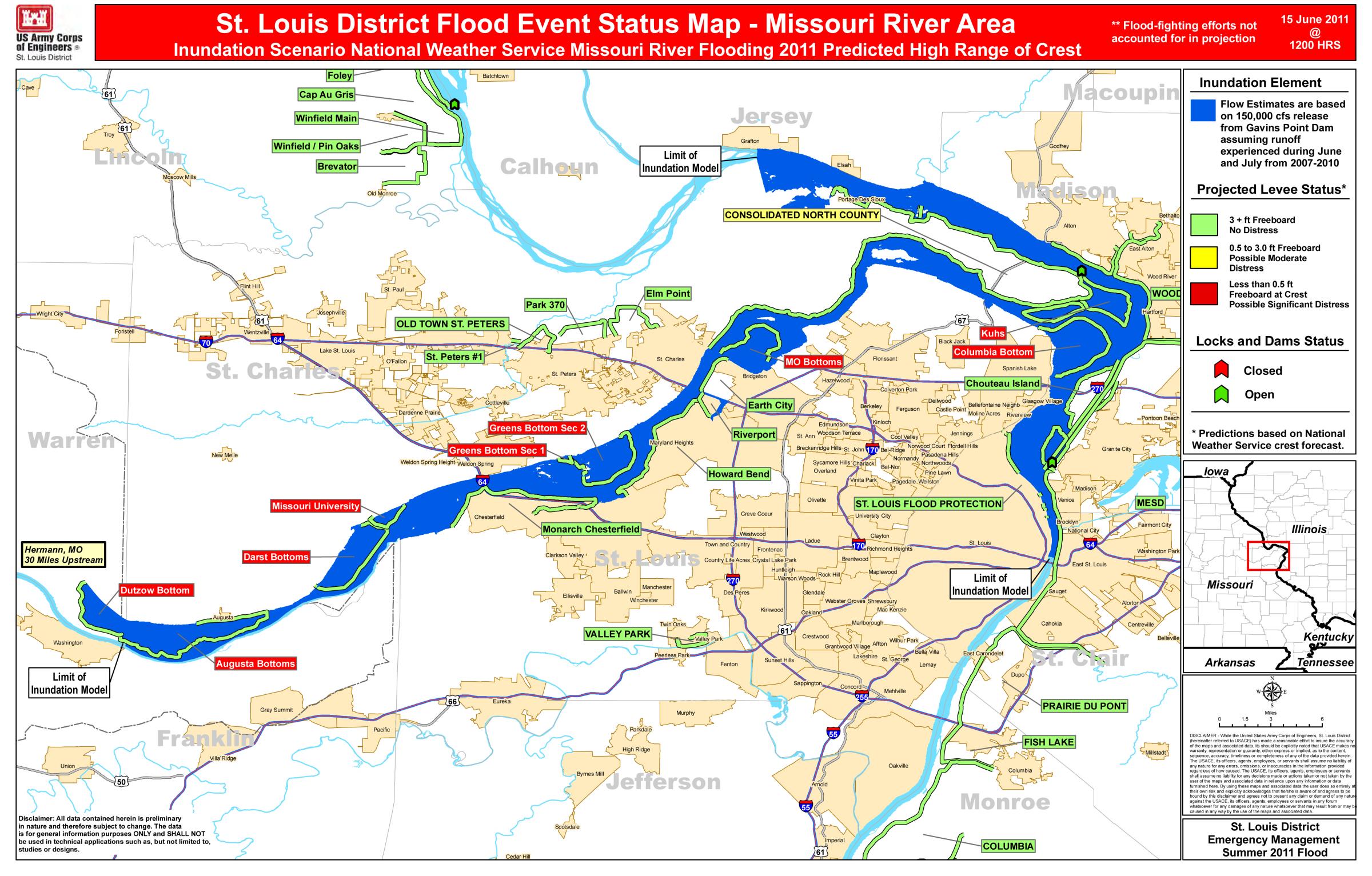

Over the next six weeks, numerous levees broke along the Mississippi River from Illinois to Louisiana, which inundated numerous towns in the Mississippi Valley. The first levee break along the Mississippi River occurred a few miles south of Elaine, Arkansas, on March 29. The White and Little Red rivers broke through the levees in Arkansas in February, flooding over 400 km 2 (99,000 acres) with 3 to 5 m (9.8 to 16.4 ft) of water. In the summer of 1926 until the spring of 1927, heavy rains fell in eastern Kansas, Oklahoma, and the Ohio Valley. The 1927 flood was the greatest flood in modern history on the lower Mississippi River.

Main article: Great Mississippi Flood of 1927 The Great Mississippi Flood of 1927, Arkansas City, Arkansas. The flooding was catastrophic, causing losses to most planted crops in the region and disrupting freight and passenger rail service on the West Bank of the river for several months. The inundation of land stretched across several Louisiana Parishes, causing floodwater to flow directly towards neighboring Gretna and Plaquemines Parish, while upstream the backwater caused noticeable rises in streams as far as Thibodaux and Raceland on Bayou Lafourche. At its peak, the crevasse was estimated to flow approximately 100,000 cubic feet per second. Caused by a farmer that dug a "rice flume" to water crops, the breach started on Ma and rapidly opened over the course of several days and weeks, expanding to approximately 1,000 feet in width accompanied by a river stage of 14.4 feet. The most devastating of these levee failures was the one located on Ames Farm in Amesville, near present-day Barataria Blvd. Major flooding in the spring of 1891 on both the Ohio and Mississippi River, causing crevasses (bank and levee failures) in multiple locations of the lower Mississippi River valley, including Robertsonville, Mississippi Concord, Louisiana Carrollton (New Orleans), Louisiana and Amesville ( Marrero), Louisiana. Congress overrode his veto the following day. Arthur nonetheless vetoed the Act on August 1, 1882. While not opposed to internal improvements on principle, President Chester A.
Such was the devastation that, in its wake, Southern Democrats and Midwestern Republicans in Congress hailing from those states afflicted by the flooding made common cause to increase appropriations for the Rivers and Harbor Act to $19 million, $5.4 million of which was earmarked for internal improvements and federal aid to the flooded areas.

The effects were much more devastating in the Lower Mississippi Valley, with an estimated 20,000 people made homeless in Arkansas alone. Intense spring rain storms beginning on February 19, 1882, led to a rapid rise of the Ohio River and flooding along the river from Cincinnati to St. McCulloh, who estimated that a total of 12,565,060 acres had been flooded across Louisiana (8,065,000), Mississippi (2,500,000), and Arkansas (2,000,000). Surveyor General for Louisiana William J. It also included the observations of former U.S. In the circular, the Flood of 1874 was described as the highest on record. Wiltz of New Orleans published a circular on May 30 addressed to "the Mayors of thirty-four large American cities" seeking contributions of cash and provisions for relief efforts. The Picayune also reported that breaches at Hushpakana and Bolivar, Mississippi, had "transformed the Yazoo Valley into an inland lake." Mayor Louis A. According to the New Orleans Daily Picayune of May 3, thirty-one of Louisiana's fifty-three parishes (home to some 375,000 people) were entirely or partially underwater. The flooding began in February and only began to recede on May 20. Heavy spring rains caused the Mississippi River to overflow, breaching levees and flooding enormous swathes of the Lower Mississippi Valley. Map of areas affected by the Great Overflow of 1874. In June, major flooding on the Mississippi River was experienced. Heavy rainfall also occurred in the Ohio River basin. Historical evidence suggest flooding occurred in the eastern Plains, from Nebraska to the Red River basin, but these areas were sparsely settled by white settlers in 1851. The State of Iowa experienced significant flooding extending to the Lower Mississippi River basin. Midwest and Plains from May to August, 1851. The flood occurred after record-setting rainfalls across the U.S.


 0 kommentar(er)
0 kommentar(er)
